Green Energy Vs. Traditional Energy - A Comparative Study
In today's rapidly changing world, the debate between green energy and traditional energy sources is more relevant than ever. With the increasing awareness of climate change and environmental degradation, many are looking for sustainable alternatives to the fossil fuels that have powered our lives for generations. This article explores the differences between these two energy paradigms, shedding light on their environmental impacts, economic implications, and the future trends shaping energy production and consumption.
So, what exactly is green energy? It refers to energy derived from renewable sources that have minimal environmental impact. Unlike traditional energy sources, which are often derived from fossil fuels, green energy comes from natural processes that replenish themselves. This includes sources like solar, wind, hydropower, and biomass. One of the most appealing aspects of green energy is its potential to significantly reduce our carbon footprint and combat climate change.
Beyond being eco-friendly, green energy also offers numerous benefits to society. For instance, it promotes energy independence by reducing reliance on imported fuels, enhances energy security, and creates jobs in emerging industries. As we delve deeper into this topic, it’s essential to understand the various types of green energy and how they contribute to a more sustainable future.
On the flip side, traditional energy sources, primarily fossil fuels such as coal, oil, and natural gas, have powered the world for decades. These energy sources are deeply embedded in our industrial systems and daily lives. However, their characteristics come with a hefty price tag—both environmentally and economically. Fossil fuels are notorious for their contribution to greenhouse gas emissions, air pollution, and climate change, raising serious questions about their long-term viability.
As we explore further, it’s crucial to understand the challenges posed by traditional energy sources. From habitat destruction due to extraction processes to the health risks associated with air and water pollution, the impact of fossil fuels extends far beyond just energy production.
When it comes to environmental impact, green energy shines brightly. It significantly reduces greenhouse gas emissions, contributing to cleaner air and a healthier planet. For instance, solar and wind energy have virtually no emissions during operation, making them ideal candidates for combating climate change. Moreover, the positive effects extend to air quality, biodiversity conservation, and the overall health of ecosystems.
Solar power is a leading green energy source that has gained tremendous popularity in recent years. Not only does it harness the sun's abundant energy, but it also boasts advantages such as:
- Sustainability: Solar energy is inexhaustible and can be harnessed anywhere the sun shines.
- Low Operational Costs: Once installed, solar panels require minimal maintenance and have low operational costs.
- Reduced Reliance on Fossil Fuels: By adopting solar energy, we can decrease our dependence on traditional energy sources.
Wind energy is another crucial component of green energy. It’s a clean and renewable source that offers numerous benefits, including:
- Low Emissions: Wind turbines produce electricity without emitting greenhouse gases.
- Job Creation: The wind energy sector is rapidly expanding, providing job opportunities in manufacturing, installation, and maintenance.
- Widespread Adoption Potential: With advancements in technology, wind energy can be harnessed in various locations, from rural areas to offshore sites.
In stark contrast, traditional energy sources contribute significantly to pollution and climate change. The extraction and burning of fossil fuels release harmful pollutants into the atmosphere, leading to:
- Carbon Emissions: The primary driver of global warming.
- Habitat Destruction: Mining and drilling operations disrupt ecosystems and wildlife.
- Health Risks: Communities near fossil fuel operations often face severe health issues due to air and water pollution.
The economic implications of green versus traditional energy are profound. While traditional energy sources may appear cheaper at first glance, they come with hidden costs that can accumulate over time. For instance, health care costs associated with pollution, environmental remediation, and the long-term impacts of climate change can outweigh the initial savings.
The green energy sector is booming, creating numerous job opportunities that can invigorate local economies. From engineers designing solar panels to technicians maintaining wind turbines, the job landscape is diverse and growing. This not only helps in reducing unemployment rates but also fosters innovation and skills development in the workforce.
Despite their lower initial costs, traditional energy sources often carry hidden expenses. These can include:
- Healthcare Costs: Increased respiratory diseases due to air pollution.
- Environmental Remediation: The cost of cleaning up oil spills and other environmental disasters.
- Climate Change Mitigation: The economic burden of adapting to climate change impacts.
1. What are the main types of green energy?
Green energy primarily includes solar, wind, hydropower, and biomass.
2. How does green energy benefit the economy?
It creates jobs, reduces health care costs, and promotes energy independence.
3. Are traditional energy sources completely phased out?
While they are still in use, there is a significant global push towards renewable energy sources.
4. What are the hidden costs of traditional energy?
These include healthcare costs, environmental remediation, and climate change mitigation expenses.

Understanding Green Energy
Green energy is not just a buzzword; it’s a revolutionary approach to how we generate power. At its core, green energy refers to energy derived from natural sources that replenish themselves, such as sunlight, wind, rain, tides, waves, and geothermal heat. Unlike traditional energy sources that rely on finite resources, green energy is sustainable and has a significantly lower environmental impact. Imagine harnessing the sun's rays or the wind's breath to power your home—sounds like something out of a sci-fi movie, right? But this is the reality we're moving towards!
There are several types of green energy, each with its unique characteristics and benefits. The most prominent include:
- Solar Energy: Captured through solar panels, this energy transforms sunlight into electricity, making it a popular choice for residential and commercial use.
- Wind Energy: Generated by wind turbines, this energy harnesses the power of the wind, often found in open plains or coastal areas.
- Hydropower: Utilizing the flow of water, hydropower plants convert moving water into electricity, often seen in dams.
- Geothermal Energy: This energy taps into the Earth's internal heat, providing a constant source of power with minimal environmental disruption.
The benefits of green energy extend far beyond just being eco-friendly. One of the most compelling advantages is its potential to combat climate change. By reducing our reliance on fossil fuels, we can significantly lower greenhouse gas emissions, which are the primary culprits behind global warming. Furthermore, green energy sources contribute to improved air quality. Imagine breathing fresher air without the pollutants that come from burning coal or oil!
Moreover, green energy fosters energy independence. Countries can reduce their reliance on imported fuels, which often come with fluctuating prices and geopolitical risks. Instead, they can invest in local energy sources, stimulating their economies and creating jobs. Speaking of jobs, the green energy sector is a powerhouse for employment opportunities. As technology advances and more projects emerge, the demand for skilled workers in this field continues to soar.
In conclusion, understanding green energy is crucial for anyone who wants to grasp the future of energy production and consumption. By embracing renewable sources, we not only protect our planet but also pave the way for a sustainable and prosperous future. The transition to green energy is not merely a trend; it’s a necessity for the survival of our planet and future generations.
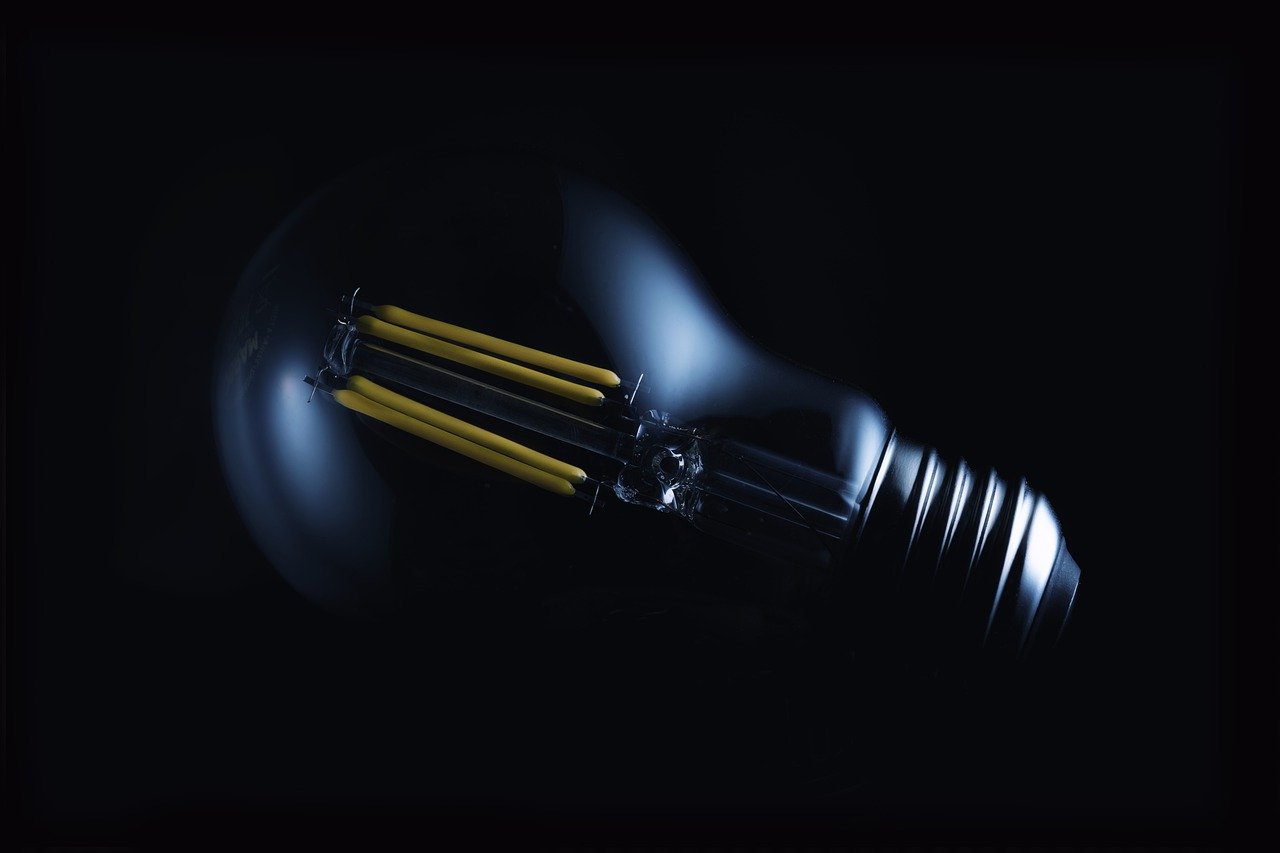
Traditional Energy Sources
For decades, traditional energy sources, primarily fossil fuels like coal, oil, and natural gas, have been the backbone of global energy production. These energy sources are derived from the remains of ancient plants and animals, buried under layers of earth for millions of years. While they have powered our industries, homes, and vehicles, their use comes with a hefty price tag—one that impacts not just our wallets but also our planet. Imagine relying on a car that runs on a fuel that not only depletes your bank account but also contributes to a smoggy atmosphere and rising sea levels. That’s the reality of traditional energy.
Fossil fuels are celebrated for their energy density, meaning they can produce a large amount of energy from a relatively small volume. This has made them incredibly popular for electricity generation, heating, and transportation. However, the convenience of traditional energy is overshadowed by its environmental consequences. The extraction and consumption of fossil fuels release significant amounts of greenhouse gases into the atmosphere, contributing to climate change and air pollution. In fact, studies show that energy production from fossil fuels is responsible for over 70% of global carbon dioxide emissions. This alarming statistic paints a stark picture of the path we’re currently on.
Moreover, traditional energy sources come with a myriad of challenges that threaten sustainability. The extraction processes—such as drilling for oil, mining for coal, and fracking for natural gas—can lead to habitat destruction, water contamination, and even seismic activity. The environmental degradation associated with these practices raises questions about the long-term viability of fossil fuels as a reliable energy source. As we continue to exploit these resources, we risk not only our environment but also our health. Communities near fossil fuel extraction sites often experience higher rates of respiratory problems and other health issues, making it clear that the costs of traditional energy are not just economic but also human.
Additionally, the global push for renewable energy is forcing a reevaluation of traditional energy’s role in our society. As nations strive to meet climate goals and reduce their carbon footprints, the reliance on fossil fuels is increasingly seen as a liability. This shift is not just a trend; it’s a necessity for a sustainable future. The energy landscape is changing, and while fossil fuels may still dominate today, their days are numbered. Transitioning to cleaner energy sources is not just about reducing emissions; it's about creating a healthier planet for future generations.
In summary, while traditional energy sources have played a crucial role in the development of modern society, their negative impacts on the environment and public health cannot be ignored. As we stand at a crossroads, the urgent need for a transition to sustainable energy solutions becomes clearer. The question remains: will we continue down the path of fossil fuels, or will we embrace the future of green energy?
- What are the main types of traditional energy sources? Traditional energy sources primarily include fossil fuels such as coal, oil, and natural gas.
- What are the environmental impacts of traditional energy? The extraction and use of fossil fuels lead to greenhouse gas emissions, air pollution, habitat destruction, and health risks.
- Why is there a shift towards renewable energy? The shift is driven by the need to reduce carbon emissions, combat climate change, and promote sustainable energy practices.
- How do traditional energy sources affect public health? Communities near fossil fuel extraction sites often experience higher rates of respiratory issues and other health problems due to pollution.
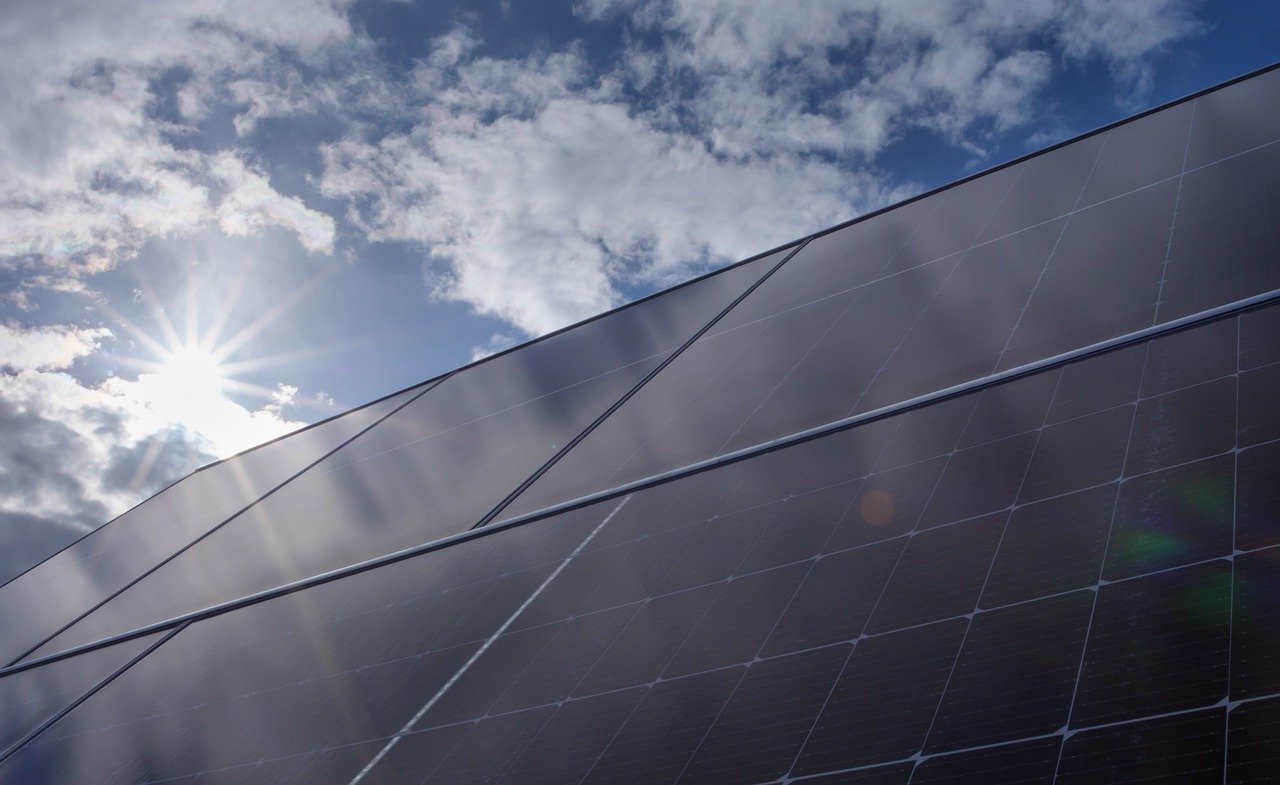
Environmental Impact of Green Energy
When we talk about green energy, we’re diving into a realm that offers a refreshing alternative to the conventional energy sources that have dominated our landscape for decades. The beauty of green energy lies in its ability to harness natural processes without the detrimental effects associated with fossil fuels. Imagine a world where energy is derived from the sun, wind, and water, all while significantly reducing our carbon footprint. That's not just a dream; it's a reality that green energy is making possible.
One of the most striking benefits of green energy is its capacity to drastically reduce greenhouse gas emissions. Unlike traditional energy sources that pump harmful pollutants into our atmosphere, renewable energy systems operate with minimal emissions. For instance, a study by the International Renewable Energy Agency (IRENA) found that transitioning to renewable energy could reduce global carbon dioxide emissions by up to 70% by 2050. This isn't just a statistic; it's a lifeline for our planet, helping combat climate change and its far-reaching effects.
Moreover, green energy contributes to improved air quality. The pollution from fossil fuels not only affects our climate but also poses serious health risks to humans. According to the World Health Organization, air pollution is responsible for millions of premature deaths each year. By shifting to renewable sources like solar and wind, we can significantly lower the levels of harmful particulates in the air, leading to healthier communities and a better quality of life.
Another critical aspect of green energy is its role in biodiversity conservation. Traditional energy extraction often leads to habitat destruction and wildlife displacement. In contrast, renewable energy projects, especially when carefully planned, can coexist with natural ecosystems. For example, wind farms can be designed to avoid migratory bird paths, and solar panels can be installed on rooftops, minimizing land use. This thoughtful approach not only preserves our natural habitats but also allows us to harness energy without compromising the environment.
To illustrate the environmental advantages of green energy, consider the following table that compares the emissions produced by various energy sources:
| Energy Source | CO2 Emissions (g/kWh) | Impact on Air Quality |
|---|---|---|
| Coal | 900 | High |
| Natural Gas | 400 | Medium |
| Solar Power | 50 | Low |
| Wind Energy | 10 | Very Low |
As we can see, the contrast is stark. While traditional energy sources like coal and natural gas contribute significantly to greenhouse gas emissions, green energy sources like solar and wind present a much cleaner alternative. The shift is not just beneficial for the environment; it’s imperative for our survival.
In conclusion, the environmental impact of green energy is overwhelmingly positive. By embracing renewable energy sources, we can pave the way for a sustainable future, one where clean air, thriving ecosystems, and a stable climate are not just aspirations but realities. The transition to green energy is not merely an option; it’s a necessity for preserving our planet for future generations.
- What is green energy? Green energy refers to renewable energy sources that have minimal environmental impact, such as solar, wind, and hydroelectric power.
- How does green energy reduce greenhouse gas emissions? Green energy sources produce little to no carbon emissions compared to fossil fuels, which significantly contribute to climate change.
- What are the benefits of using solar power? Solar power is sustainable, has low operational costs, and helps reduce reliance on fossil fuels.
- Can wind energy create jobs? Yes, the green energy sector is rapidly growing and creating numerous job opportunities in various fields.
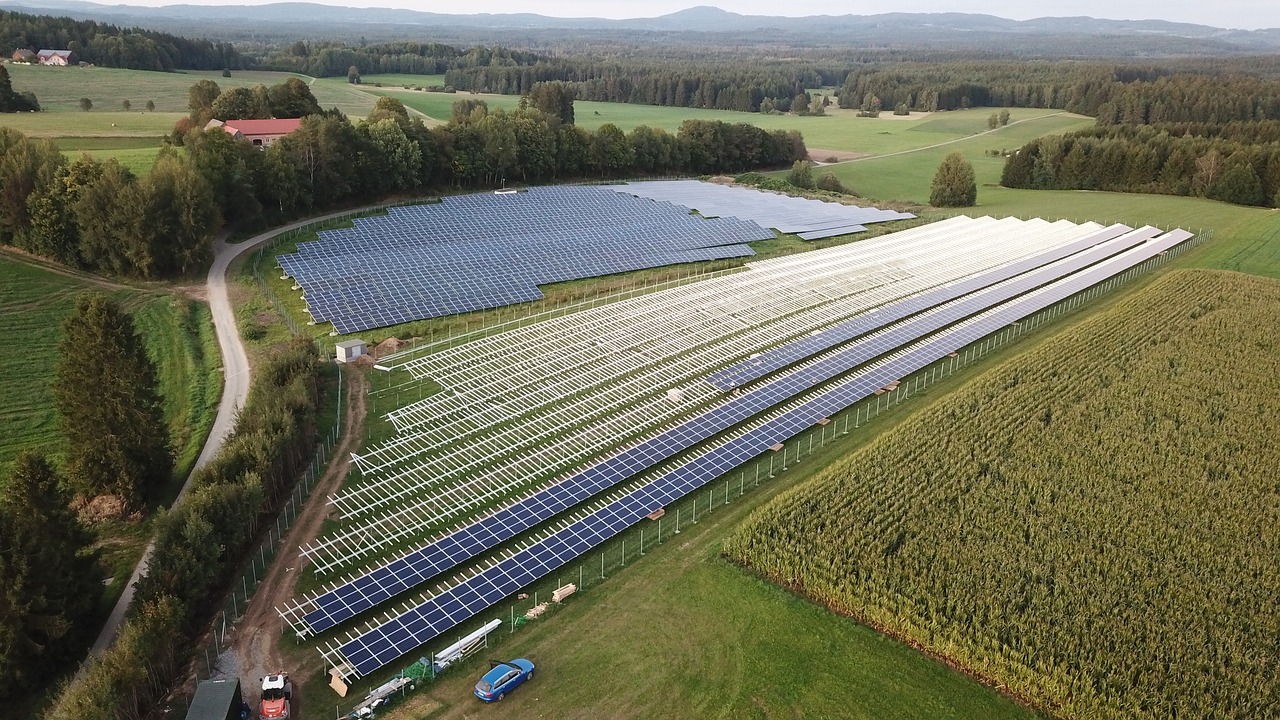
Solar Power Benefits
When we talk about green energy, one of the shining stars that often comes to mind is solar power. It’s like the superhero of the energy world—clean, sustainable, and incredibly versatile. But what exactly makes solar power so beneficial? Well, let’s break it down. First off, solar energy is derived from the sun, which means it’s an abundant resource. Unlike fossil fuels, which are finite and depleting, the sun is expected to shine for billions of years. This makes solar power a truly renewable energy source that can be harnessed anywhere there’s sunlight.
One of the standout advantages of solar power is its low operational costs. Once you’ve installed solar panels, the ongoing costs are minimal. You’re essentially capturing sunlight for free! This is in stark contrast to traditional energy sources, where you’re constantly paying for fuel. Over time, this can lead to significant savings on your energy bills. In fact, according to a recent study, homeowners can save anywhere from $10,000 to $30,000 over the lifespan of their solar panels, depending on their location and energy usage.
Moreover, solar power plays a crucial role in reducing our reliance on fossil fuels. By shifting to solar energy, we’re not just saving money; we’re also contributing to a healthier planet. Fewer fossil fuels mean less pollution, and that translates to cleaner air and a reduction in greenhouse gas emissions. To put this into perspective, the average solar panel system can offset about 100 tons of carbon dioxide over its lifetime. That’s like planting over 2,500 trees!
Another remarkable benefit is the potential for job creation. The solar industry is booming, and with it comes a variety of job opportunities. From manufacturing and installation to maintenance and sales, the demand for skilled workers in the solar sector is skyrocketing. According to the Solar Foundation’s National Solar Jobs Census, the solar industry employed over 250,000 workers in the U.S. alone in recent years, and this number is expected to grow as more people embrace renewable energy.
Lastly, let’s not forget about the technological advancements that have made solar power more efficient and accessible than ever before. Innovations in solar panel technology mean that we can now capture more sunlight, even on cloudy days. Plus, with the rise of battery storage solutions, homeowners can store excess energy generated during the day for use at night or during power outages. This creates a more resilient energy system that empowers individuals and communities alike.
In summary, the benefits of solar power are numerous and impactful. From its low operational costs and environmental advantages to job creation and technological innovations, it’s clear that solar energy is not just a trend—it’s a vital part of our future. So, if you’re considering making the switch to solar, know that you’re not just investing in your home; you’re investing in a cleaner, greener planet for generations to come.
- What are the initial costs of installing solar panels? The costs can vary widely based on the size of the system and local incentives, but many homeowners see a return on investment within 5 to 7 years.
- Do solar panels work on cloudy days? Yes, solar panels can still generate electricity on cloudy days, though their efficiency may be reduced.
- How long do solar panels last? Most solar panels come with a warranty of 25 years, but they can last longer with proper maintenance.
- Can I go off-grid with solar energy? Yes, with the right setup, including battery storage, you can go off-grid and rely entirely on solar energy.

Wind Energy Advantages
Wind energy stands out as one of the most promising and sustainable sources of green energy available today. It harnesses the natural power of the wind to generate electricity, making it not only a clean alternative to fossil fuels but also a remarkably efficient one. One of the most compelling advantages of wind energy is its low environmental impact. Unlike traditional energy sources, wind turbines do not emit harmful greenhouse gases during operation, which means they play a significant role in combating climate change. Can you imagine a world where the air is cleaner and the climate is more stable? That's the potential wind energy brings to the table.
Moreover, wind energy contributes to job creation in numerous ways. As the demand for renewable energy sources increases, so does the need for skilled workers in various sectors, including manufacturing, installation, and maintenance of wind turbines. According to recent studies, the wind energy sector has the potential to create hundreds of thousands of jobs globally. These jobs not only provide employment opportunities but also stimulate local economies, particularly in rural areas where wind farms are often located. It's a win-win situation!
Another important aspect to consider is the cost-effectiveness of wind energy. While the initial investment in wind turbines can be significant, the operational costs are remarkably low. Once installed, wind turbines require minimal maintenance, and the cost of wind energy generation continues to decrease as technology advances. In fact, the levelized cost of electricity (LCOE) from wind power has dropped dramatically over the past decade, making it competitive with traditional energy sources. This trend suggests that as technology improves, wind energy will only become more affordable, further enhancing its appeal.
Additionally, wind energy can be harnessed on a large scale, which means it has the potential to significantly contribute to national and global energy needs. Countries around the world are investing heavily in wind farms, both onshore and offshore, to diversify their energy portfolios and reduce reliance on fossil fuels. For instance, nations like Denmark and Germany have made substantial strides in wind energy adoption, showcasing how effective this energy source can be in meeting large-scale energy demands.
In summary, the advantages of wind energy are clear. From its minimal environmental impact to its ability to create jobs and provide cost-effective energy solutions, wind power represents a crucial component of our transition to a more sustainable future. As we look to the horizon, the spinning blades of wind turbines symbolize hope—a hope for cleaner air, healthier communities, and a planet that can thrive for generations to come.

Environmental Impact of Traditional Energy
When we think about traditional energy sources, primarily those that rely on fossil fuels like coal, oil, and natural gas, it’s hard to ignore their profound environmental impact. These energy sources have powered our industries and homes for decades, but at what cost? The burning of fossil fuels releases a significant amount of greenhouse gases into the atmosphere, leading to climate change and global warming. In fact, according to the Environmental Protection Agency (EPA), fossil fuel combustion is responsible for about 76% of total greenhouse gas emissions in the United States alone.
Moreover, the extraction and transportation of these fuels can be equally damaging. Oil spills, for instance, can devastate marine ecosystems, while coal mining can result in habitat destruction and soil erosion. The consequences of these activities are not just environmental; they also have serious implications for human health. Air pollution from burning fossil fuels is linked to respiratory diseases, cardiovascular problems, and even premature death. This creates a vicious cycle: as we extract more resources to meet our energy demands, we inadvertently harm the planet and ourselves.
Let’s break down some of the specific environmental impacts of traditional energy sources:
- Air Pollution: Emissions from fossil fuels contribute to smog and acid rain, affecting air quality and public health.
- Water Contamination: Oil drilling and coal mining can lead to toxic spills and runoff, polluting local water supplies.
- Habitat Destruction: The infrastructure needed for fossil fuel extraction and transportation can destroy natural habitats and biodiversity.
In summary, while traditional energy sources have provided us with the power to drive our economies and improve our quality of life, their environmental costs are staggering. The transition to sustainable alternatives is not just a matter of preference; it’s a necessity for the health of our planet and future generations. As we continue to grapple with the consequences of our energy choices, it’s clear that the time for change is now.
- What are the main environmental issues caused by traditional energy sources?
The main issues include air pollution, water contamination, and habitat destruction. These result from the extraction, transportation, and burning of fossil fuels.
- How does fossil fuel consumption affect human health?
Fossil fuel consumption leads to air pollution, which is linked to respiratory diseases, heart problems, and other health issues, contributing to premature deaths.
- Why is transitioning to green energy important?
Transitioning to green energy is crucial to reduce greenhouse gas emissions, mitigate climate change, and protect both the environment and public health.

Economic Considerations
When diving into the economic implications of green energy versus traditional energy sources, it's essential to recognize that this comparison is not merely a numbers game; it’s a reflection of our values and priorities as a society. The transition from fossil fuels to renewable energy is not just about saving the planet; it's also about creating a sustainable economic future. To put it simply, investing in green energy can be likened to planting seeds for a healthy garden. Sure, it requires initial effort and resources, but the long-term benefits are worth every bit of investment.
One of the most compelling aspects of green energy is its potential for job creation. The green energy sector is burgeoning, with opportunities sprouting up in various fields such as solar panel installation, wind turbine maintenance, and energy efficiency consulting. According to recent studies, the renewable energy sector is expected to create millions of jobs worldwide in the coming years. This contrasts sharply with the traditional energy sector, which is often plagued by job losses due to automation and a gradual shift towards cleaner technologies.
Moreover, the economic model of green energy is becoming increasingly favorable. While the initial costs of renewable energy technologies can be higher than traditional fossil fuels, the long-term savings are significant. For instance, the operational costs of solar and wind energy are markedly lower than those of coal or gas, primarily because they rely on free resources: sunlight and wind. Additionally, as technology advances, the prices of renewable energy systems continue to drop, making them more accessible to both consumers and businesses.
| Energy Source | Initial Cost | Operational Cost (per year) | Long-term Savings |
|---|---|---|---|
| Solar Power | $15,000 | $500 | $20,000 (over 20 years) |
| Wind Energy | $30,000 | $1,000 | $50,000 (over 20 years) |
| Coal | $10,000 | $5,000 | - |
| Natural Gas | $12,000 | $4,000 | - |
However, the economic landscape is not without its challenges. Traditional energy sources, while often cheaper upfront, come with hidden costs that can create a significant financial burden on society. These include healthcare costs related to pollution, environmental remediation expenses, and the economic impact of climate change. The costs associated with natural disasters, which are increasingly linked to climate change, can run into billions of dollars. In this light, investing in green energy can be seen as an insurance policy against these unpredictable and often catastrophic costs.
In conclusion, the economic considerations of green energy versus traditional energy sources reveal a clear trend: the future lies in renewables. As we continue to innovate and adapt, the financial viability of green energy will only improve, paving the way for a more sustainable and economically sound future. The transition may be challenging, but the long-term benefits for both our economy and our planet make it a worthwhile endeavor.
- What are the main advantages of green energy? Green energy sources are renewable, reduce greenhouse gas emissions, and often have lower operational costs compared to fossil fuels.
- How does job creation in green energy compare to traditional energy? The green energy sector is rapidly growing and is expected to create millions of jobs, while traditional energy often sees job losses due to automation and decline.
- Are there hidden costs associated with traditional energy? Yes, traditional energy sources often incur hidden costs such as healthcare expenses from pollution and environmental remediation costs.
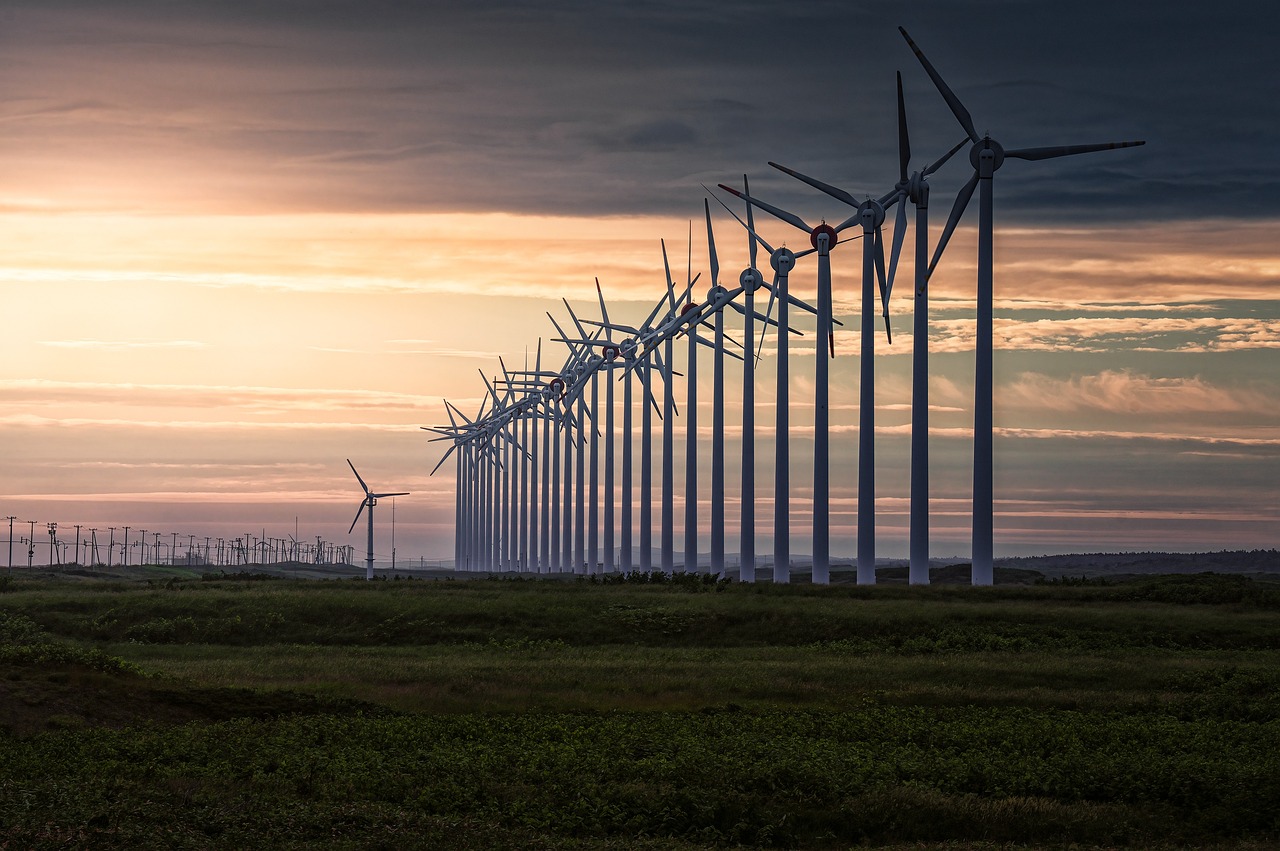
Job Creation in Green Energy
The green energy sector is not just about saving the planet; it's also about creating jobs and boosting local economies. In recent years, the shift towards renewable energy sources has led to a surge in employment opportunities that were previously unimaginable. With the world increasingly recognizing the importance of sustainability, the demand for skilled workers in this field is skyrocketing. But what exactly does this mean for job seekers and the economy as a whole? Let’s dive into the specifics.
Firstly, the green energy industry encompasses a wide range of sectors, including solar power, wind energy, hydroelectricity, and bioenergy. Each of these sectors requires a diverse set of skills, from engineering and project management to installation and maintenance. For instance, solar panel installation alone has become a booming field, with companies constantly on the lookout for trained professionals who can effectively set up and maintain these systems. According to recent studies, the solar industry alone has created over 250,000 jobs in the United States, and this number is expected to grow as more households and businesses turn to solar energy.
Moreover, wind energy is another area where job creation is thriving. Wind turbine technicians are in high demand, with their roles projected to grow by 61% over the next decade, making it one of the fastest-growing job sectors in the country. These technicians not only help in the installation of turbines but also play a vital role in their maintenance and repair. This is crucial, as wind energy continues to expand its footprint across the globe, providing clean energy solutions and reducing our dependence on fossil fuels.
But it’s not just about the technical jobs; the green energy sector also spurs growth in ancillary services. From manufacturing components to providing consulting services, the ripple effect of green energy job creation is extensive. A recent report highlighted that for every job created in the renewable energy sector, approximately 3.5 additional jobs are generated in related industries. This means that investing in green energy not only helps the environment but also stimulates the economy as a whole.
| Sector | Job Types | Projected Job Growth (%) |
|---|---|---|
| Solar Energy | Installers, Engineers, Sales | 20 |
| Wind Energy | Turbine Technicians, Engineers, Project Managers | 61 |
| Hydroelectricity | Technicians, Engineers, Environmental Scientists | 15 |
| Bioenergy | Researchers, Technicians, Policy Analysts | 25 |
Lastly, the green energy sector is also a champion of inclusivity. Many initiatives aim to provide training and job opportunities to underrepresented communities, ensuring that the benefits of this booming industry are shared widely. Programs focusing on workforce development are essential in providing the necessary skills to those who may not have had access to them before. This not only helps individuals secure jobs but also promotes a more equitable society.
In conclusion, the green energy sector is a beacon of hope for job creation in the modern economy. With its rapid growth and the wide range of opportunities it presents, it’s clear that moving towards renewable energy sources is not just a sustainable choice but also a smart economic strategy. As we continue to invest in green technologies, we pave the way for a brighter, more sustainable future, filled with job opportunities that benefit both individuals and communities.
- What types of jobs are available in the green energy sector?
There are various roles, including solar panel installers, wind turbine technicians, engineers, project managers, and environmental scientists.
- How fast is the green energy job market growing?
Many sectors within green energy are experiencing rapid growth, with job opportunities projected to increase significantly over the next decade.
- Are green energy jobs accessible to everyone?
Yes, various training programs are available to help individuals from different backgrounds gain the skills needed for these jobs.
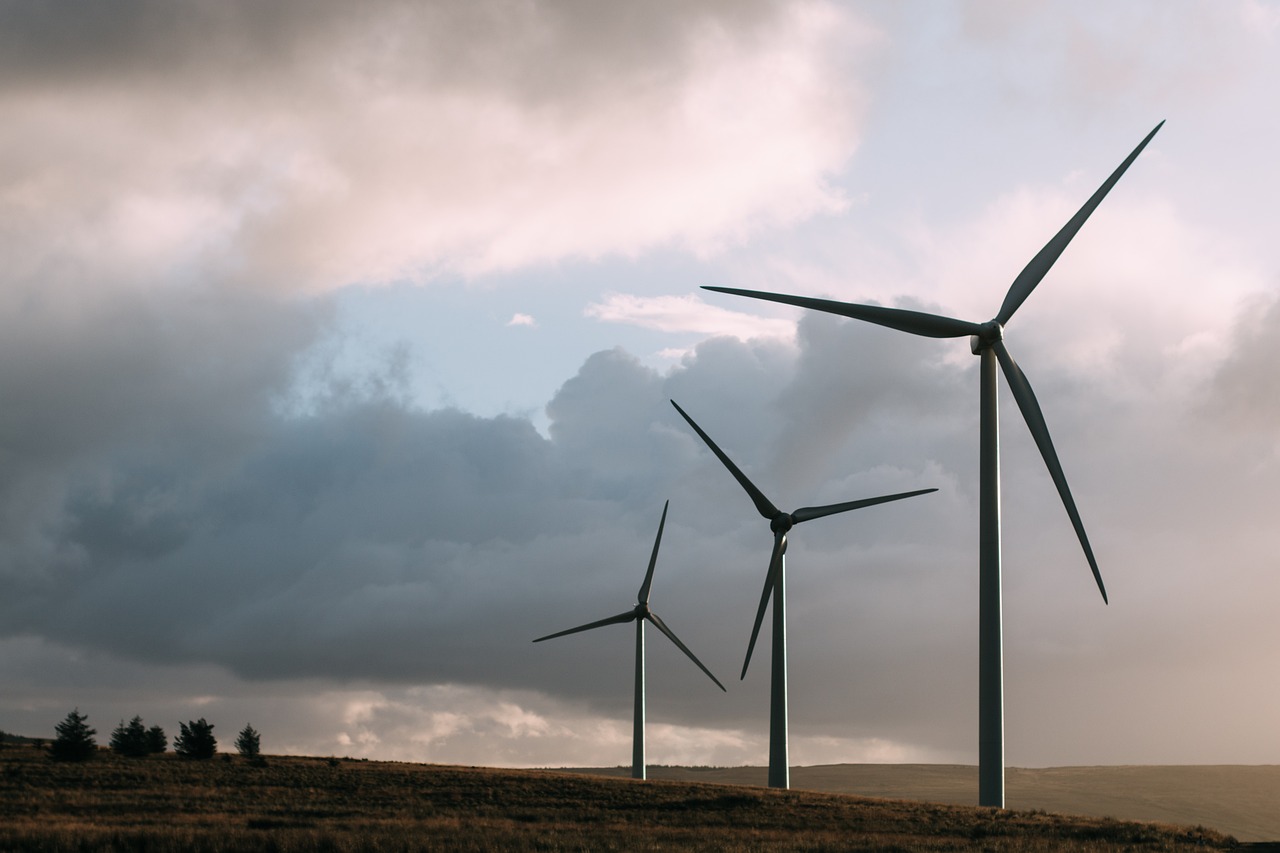
Cost Analysis of Traditional Energy
When we talk about the cost of traditional energy sources, primarily fossil fuels, it’s crucial to look beyond the sticker price. At first glance, fossil fuels like coal, oil, and natural gas may seem like the cheaper option. However, when we dig deeper, we uncover a myriad of hidden costs that can significantly impact the economy, health, and environment. Let’s break it down.
First off, there are direct costs associated with extraction, transportation, and processing of fossil fuels. These costs can fluctuate wildly based on market conditions, geopolitical factors, and supply chain disruptions. For instance, the extraction of oil from tar sands or deep-sea drilling often requires substantial investment and can lead to unexpected expenses. According to recent studies, the average cost of extracting oil from these sources can be over $30 per barrel, which can skyrocket in times of crisis.
But that’s just the tip of the iceberg. The external costs associated with fossil fuel consumption are staggering. These include:
- Healthcare Costs: Air pollution from burning fossil fuels leads to respiratory diseases, heart conditions, and other health issues. The American Lung Association estimates that air pollution costs the U.S. economy over $150 billion annually in healthcare expenses.
- Environmental Remediation: The costs of cleaning up oil spills, restoring habitats damaged by coal mining, and addressing other environmental degradation can run into the billions. For instance, the Deepwater Horizon oil spill in 2010 resulted in costs exceeding $60 billion.
- Climate Change Mitigation: The impact of fossil fuels on climate change is profound, leading to extreme weather events that require costly disaster relief and infrastructure repairs. The National Oceanic and Atmospheric Administration (NOAA) reported that the U.S. spent over $300 billion on natural disaster recovery in recent years, much of which can be linked to climate change exacerbated by fossil fuel emissions.
Moreover, the economic stability of regions reliant on fossil fuel extraction is often at risk. As the world shifts toward greener energy, jobs in traditional energy sectors are becoming less secure. This transition can lead to economic downturns in communities heavily dependent on fossil fuel production, as seen in various coal-dependent towns across the U.S. and Europe.
In contrast, while the initial investment in green energy technologies may be higher, the long-term savings and benefits can far outweigh these costs. Renewable energy sources such as solar and wind have minimal operational costs and are becoming increasingly affordable. The levelized cost of electricity (LCOE) for solar and wind has dropped dramatically in recent years, making them competitive with traditional energy sources. According to the International Renewable Energy Agency (IRENA), the global weighted-average LCOE for solar fell by 89% between 2010 and 2020. This trend is likely to continue as technology advances and economies of scale are achieved.
In conclusion, while traditional energy sources may appear cheaper in the short term, the long-term costs associated with health, environmental damage, and economic instability paint a different picture. As we transition to a more sustainable future, it’s essential to consider not just the price at the pump but the broader implications of our energy choices.
Q: Why are fossil fuels considered to have hidden costs?
A: Fossil fuels incur additional expenses related to health care, environmental remediation, and climate change mitigation, which are often not included in the initial price of energy.
Q: How does the cost of renewable energy compare to fossil fuels?
A: Although renewable energy may require a higher upfront investment, the long-term operational costs are significantly lower, making them more economically viable in the long run.
Q: Can transitioning to green energy create jobs?
A: Yes! The green energy sector is rapidly expanding and is projected to create numerous job opportunities in manufacturing, installation, and maintenance of renewable energy technologies.
Frequently Asked Questions
- What is green energy?
Green energy refers to renewable energy sources that have minimal environmental impact. This includes solar, wind, hydro, and geothermal energy, all of which contribute to a cleaner planet.
- How does green energy benefit the environment?
Green energy significantly reduces greenhouse gas emissions, improving air quality and combating climate change. It also helps conserve biodiversity by minimizing habitat destruction associated with fossil fuel extraction.
- What are the main types of traditional energy sources?
Traditional energy sources primarily consist of fossil fuels such as coal, oil, and natural gas. These sources have powered the world for decades but come with significant environmental and health challenges.
- What are the economic implications of switching to green energy?
Transitioning to green energy can lead to job creation in new sectors, reduce dependence on imported fuels, and lower long-term energy costs despite higher initial investments. It’s a smart move for sustainable economic growth!
- What are the hidden costs of traditional energy sources?
While traditional energy may seem cheaper initially, there are hidden costs such as healthcare expenses from pollution-related illnesses and environmental remediation costs that can add up significantly over time.
- How does solar power contribute to reducing reliance on fossil fuels?
Solar power harnesses energy from the sun, providing a sustainable and renewable alternative to fossil fuels. By using solar energy, we can decrease our carbon footprint and lessen our dependence on non-renewable resources.
- What are the job opportunities in the green energy sector?
The green energy sector is booming, offering a variety of jobs ranging from engineers and technicians to project managers and sales professionals. This growth not only supports the economy but also fosters innovation.
- Why is wind energy considered a crucial component of green energy?
Wind energy is a clean, renewable source that produces electricity without emitting greenhouse gases. It has the potential for widespread adoption and can create numerous jobs while providing energy security.
- What challenges do traditional energy sources pose to sustainability?
Traditional energy sources contribute to pollution, climate change, and habitat destruction. The extraction and burning of fossil fuels release harmful emissions that threaten both human health and the environment.



















